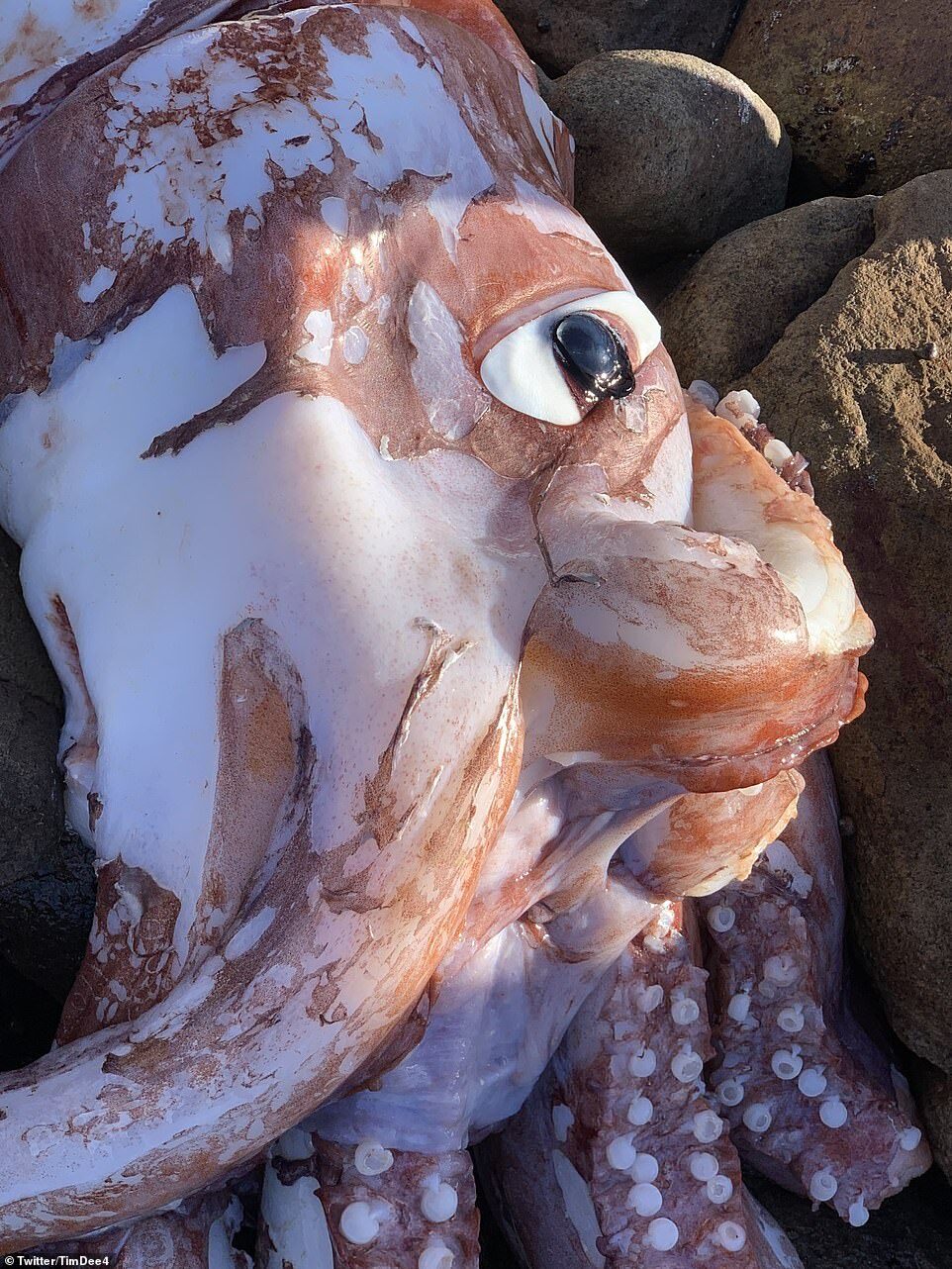
Twitter user Tim Dee, who found the strange-looking sea creature on Scarborough Beach on Tuesday, shared photos and videos online that show the colorful squid's gigantic eye.
'Giant squid species wrecked on Scarborough beach this morning,' he wrote. 'What's it to ya, Moby Dick?'
Dee's video shows a marine biologist pulling back flesh to reveal the squid's huge beak that it uses for hunting and fishing.
The sea creature, which looks like something Salvador Dali would have painted, is also known for having a very large eye - usually up to 11 inches in diameter with a 3.5 inch pupil. Larger eyes can better detect light, including bioluminescent light, which is hard to find in the ocean's depths.
The previous squid was found only a few miles down the coast and was reportedly in much worse condition.
Giant squid is one of the largest invertebrates known - although sometimes its size has been exaggerated.
Recent estimates put the maximum size at around 39 to 43 feet for females and 33 feet for males, from the posterior fins to the tip of the two long tentacles.
Claims of them reaching 66 feet have not been scientifically proven.
Known as Architeuthis dux, the squid has a mantle (or torso), eight arms and two longer tentacles. Its arms and tentacles account for a huge percentage of its length.
The squid also catch prey with their tentacles, gripping it with serrated sucker rings and then pulling it toward its beak.
The gigantic squid also have tiny fins near the rear of their mantles that they use to move - being propelled by pulling water in through the mantle cavity and pushing it through the siphon.
These creatures usually reside at depths of 980 to 3,280 feet below the ocean's surface.
They can breathe using two large gills inside the mantle cavity.
The first images of a giant squid in its natural habitat were taken by a team of Japanese researchers in 2004.
The unique sea creatures are usually found near continental and island slopes from the North Atlantic Ocean, especially Newfoundland, Norway, the northern British Isles, Spain and the oceanic island of Azores and Madeira, to the South Atlantic around southern Africa, the North Pacific near Japan, and the southwestern Pacific around New Zealand and Australia.
The only known predators of adult giant squid are sperm whales, pilot whales, southern sleeper sharks and sometimes killer whales.
Samples collected from the Scarborough carcass will be collected and taken to Cape Town's Iziko South African Museum to be studied, according to Newsweek.



Comment: Details of the specimen found in May: Beachgoers stunned after elusive giant squid washes up on shoreline near Cape Town, South Africa